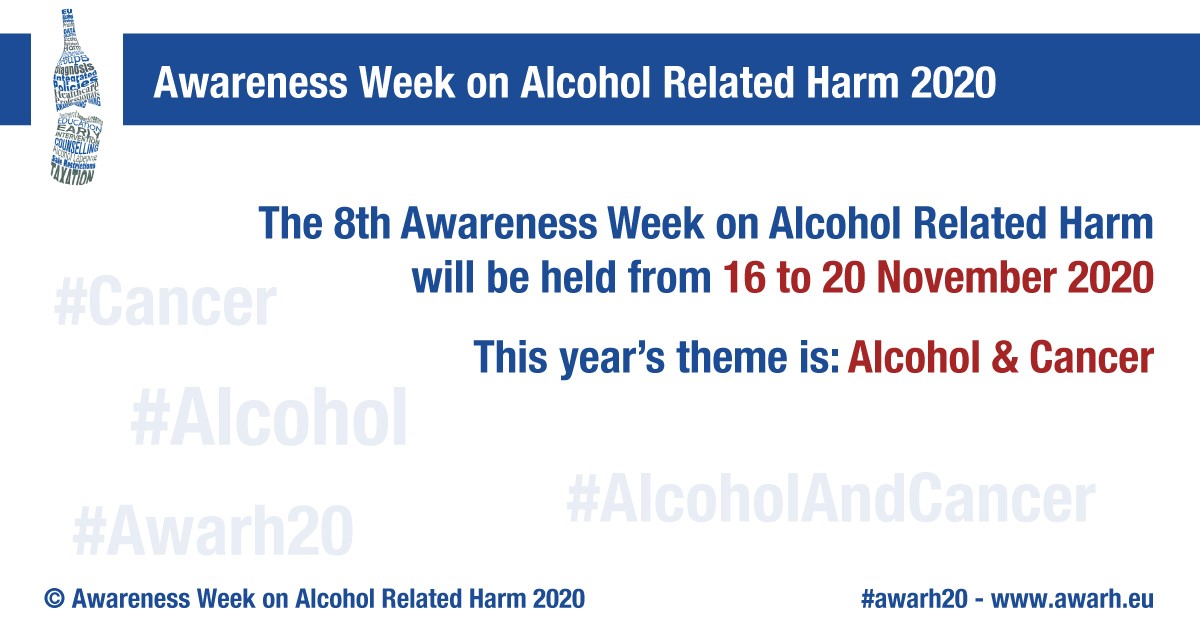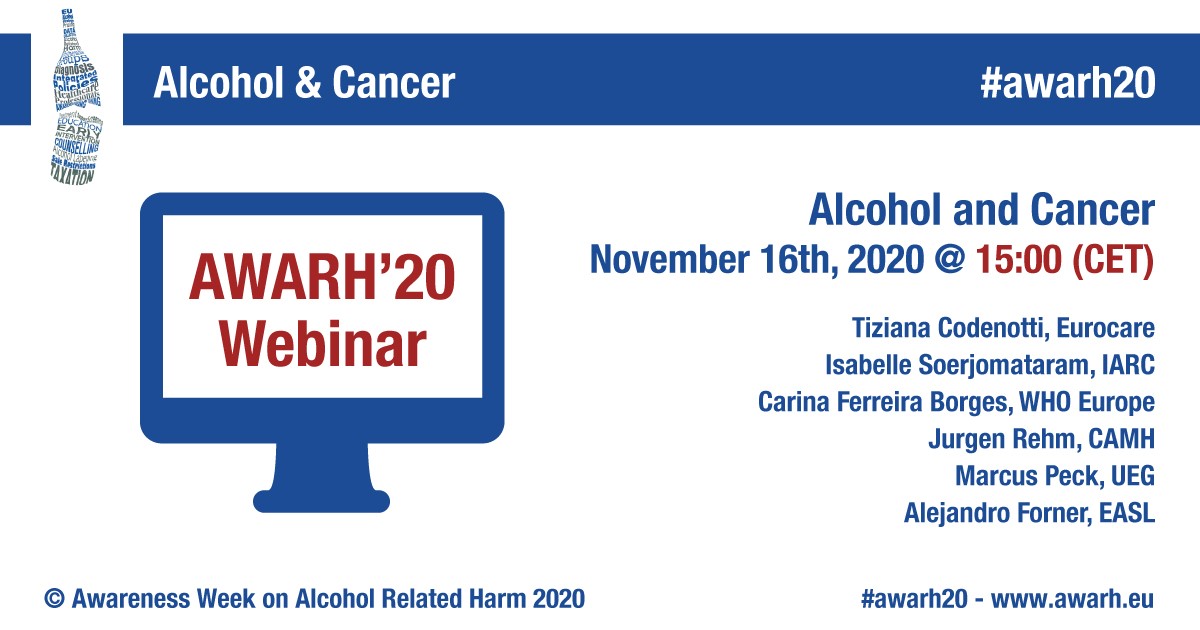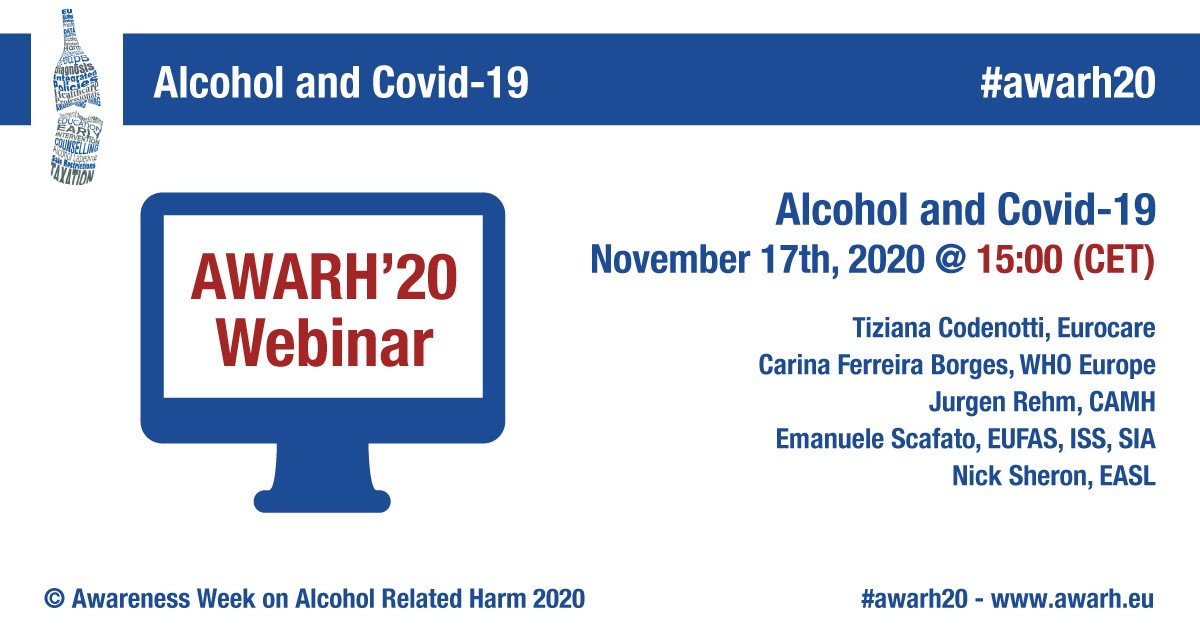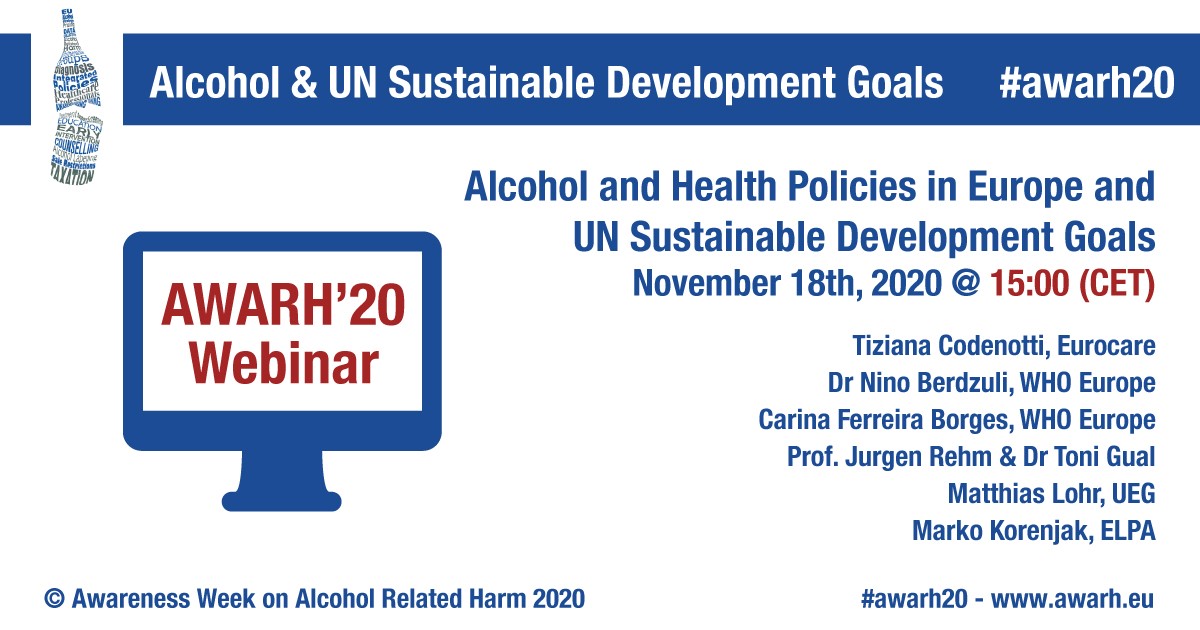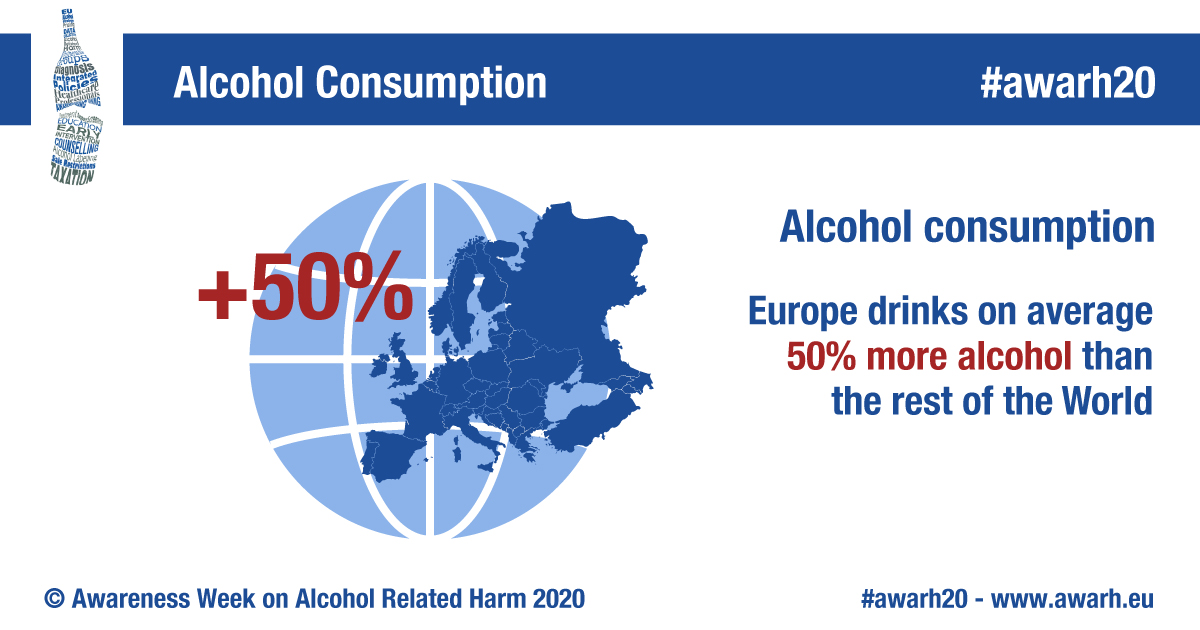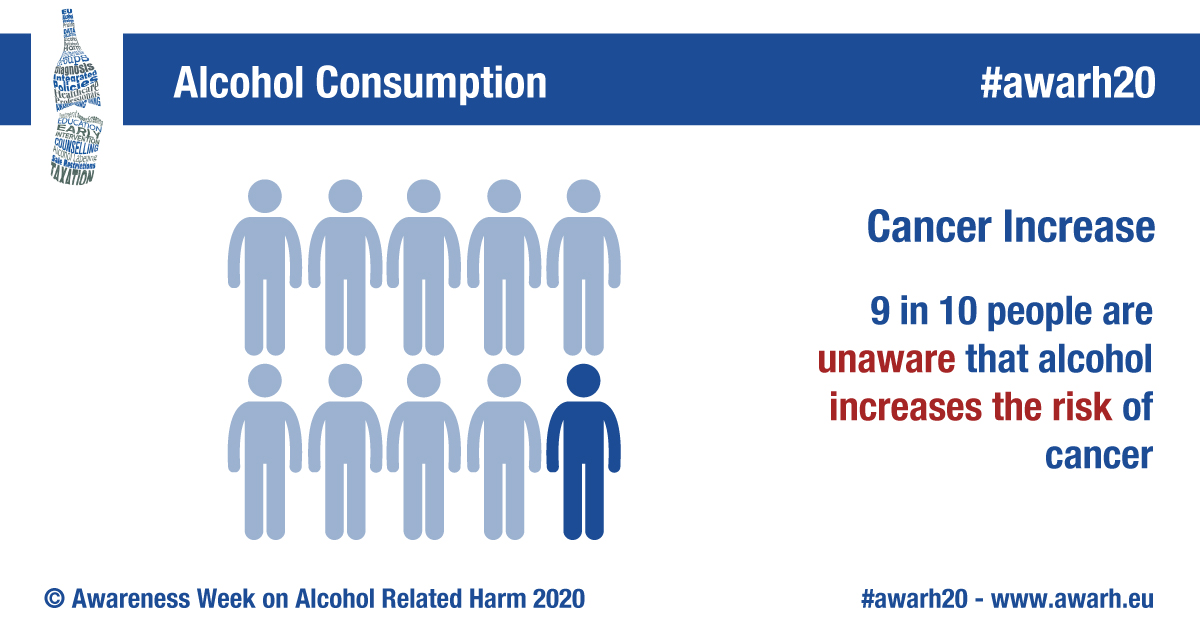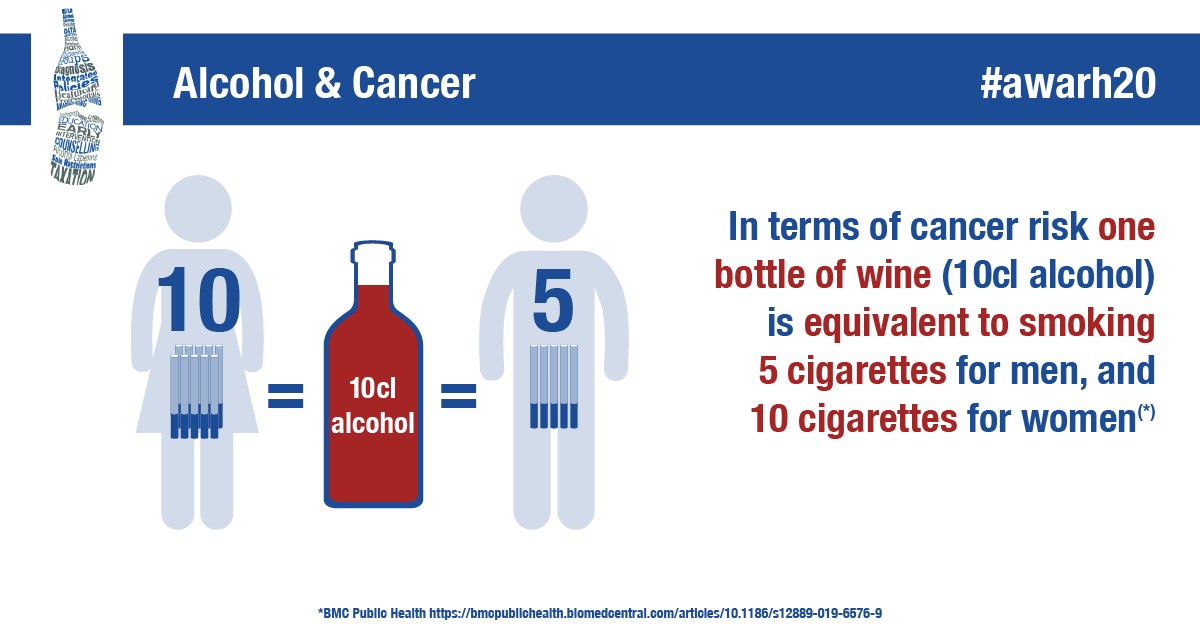EASL engages in Awareness Week on Alcohol-Related Harm 2020

All about the Awareness Week on Alcohol-Related Harm (AWARH)
16 November 2020
Awareness Week on Alcohol-Related Harm (AWARH) takes place yearly. It serves to raise awareness among EU policymakers of the types of harm caused by alcohol, to increase awareness about the need to address alcohol-related harm in Europe, and to highlight the need to address it through an integrated approach to alcohol policy. In 2020, the spotlight is on cancer. Nonetheless, the week also highlights health in Europe through alcohol policies regarding COVID-19 and the Sustainable Development Goals.
Visit the AWARH website to take part and watch the webinars. The webinars include input from EASL experts, Prof. Nick Sheron, EASL Policy and Public Health Committee Member, and Prof. Alejandro Forner, former EASL Scientific Committee Member.
You can use the AWAHR campaign material and infographics throughout the week. Follow #AWAHR20 on Twitter, too.
How is EASL engaged in AWAHR 2020?
EASL is pleased to be a partner of AWAHR20, together with United European Gastroenterology (UEG), European Liver Patients Association (ELPA), European Brain Council (EBC), and European Federation of Addiction Societies (EUFAS). This year, we are working closely together with WHO Europe Alcohol team. The week is being organised and rolled out by Eurocare.
What efforts is EASL taking to tackle the harm related to alcohol?
EASL is engaged in creating alcohol awareness on many fronts, drawing upon the power of the hepatology network worldwide. Year by year, we are proud to be developing new initiatives and publications for clinicians, policymakers, and patients.
In honour of Liver Cancer Awareness Month, October 2020, EASL offered the liver community a collection of open-access educational resources on liver cancer, developed with worldwide experts in the field among which a special audio interview Dr Massimo A. Lavarone, hepatologist at the Ospedale Maggiore in Milan, Italy, answering key questions raised by the Liver Patients International (LPI) and PSC Support, two EASL-affiliated patient associations, both part of the EASL Patient Synergies project.
Fast facts: Linking liver cancer and alcohol-related liver disease
- Alcohol is the main driver of liver disease associated with primary liver cancer (hepatocellular carcinoma, HCC), accounting for 30% of cases worldwide.
- A high annual incidence of primary liver cancer has been observed in patients with alcohol-related cirrhosis, reaching 2.9%, emphasising the need for periodic surveillance in these patients.
- Impaired surveillance and poor patient compliance can lead to primary liver cancer diagnosis at a late stage and to poor survival in patients with alcohol-related cirrhosis.
Read more: “Alcohol and cancer in the WHO European Region: An appeal for better prevention (2020)”, WHO fact sheet, published 18 November 2020
“Hepatocellular carcinoma in the setting of alcohol-related liver disease“, Journal of Hepatology, February 2019
How many cigarettes in a bottle of wine?
“In terms of cancer risk, one bottle of wine (containing 10 cl alcohol) is equivalent to smoking five cigarettes for men, and ten cigarettes for women. This Awareness Week on Alcohol-Related Harm gives us a chance to make this go viral, so that millions more people may know this,” said Prof. Nick Sheron, EASL Policy and Public Health Committee Member.
“Women and men have the right to know – how many cigarettes there are in each bottle of wine, and the risk of cancer to them from both alcohol and smoking. We must all know the associated risk of cancer from drinking alcohol, not only from smoking.”
Fast facts: Simple policy measures can save lives
- Simple, cheap and effective changes to alcohol policy by European Institutions and member states have the potential to dramatically reduce liver mortality in Europe: regular incremental above inflation tax increases, a minimum price for alcohol, effective protection of children from alcohol marketing and low level interventions from clinicians.
- More than 2,370,000 years of life are lost to liver disease, before the age of 50 (more than lung cancer, trachea, bronchus, oesophageal, stomach, colon, rectum, and pancreatic cancer combined). Between 60–80% of these deaths are alcohol-related.
- Taxation and price regulation are the most effective measures to reduce alcohol-related mortality, although the effect varies across different countries.
Read more: “Public health policies and alcohol-related liver disease“, Journal of Hepatology, August 2019
and “Treating alcohol-related liver disease from a public health perspective“, Journal of Hepatology, February 2019
Fast facts: EASL policy recommendations
- Increasing price: EASL recommends public health and education programmes to change behaviours and the separation of alcohol products in shops (similar to actions taken against tobacco).
EASL recommends the introduction of excise taxes and other pricing policies, such as minimum price per alcohol gram, to make alcohol less affordable. - Restricting advertising: EASL recommends that countries move towards a comprehensive and legislative ban on alcohol advertising, promotion, and sponsorship, particularly those aimed at young people.
This should be monitored by governments, because self-regulation by the alcohol industry has not been effective. Furthermore, there is strong evidence that industry has been successful in preventing implementation of effective policies and in circulating misleading information to the public. - Improving labelling: EASL recommends the implementation of mandatory labelling of alcohol products, which includes health information on the risks of alcohol consumption, especially cancer and risk during pregnancy, as well as information regarding the caloric value.
Read the EASL Policy Statement on Reducing Alcohol-Related Liver Disease Burden, published June 2019: Full version and accessible lay version


